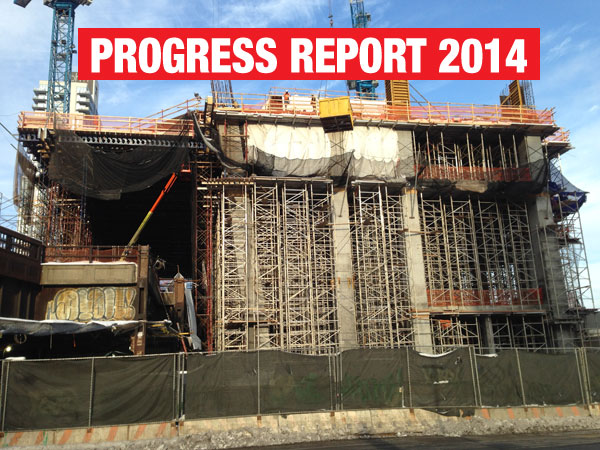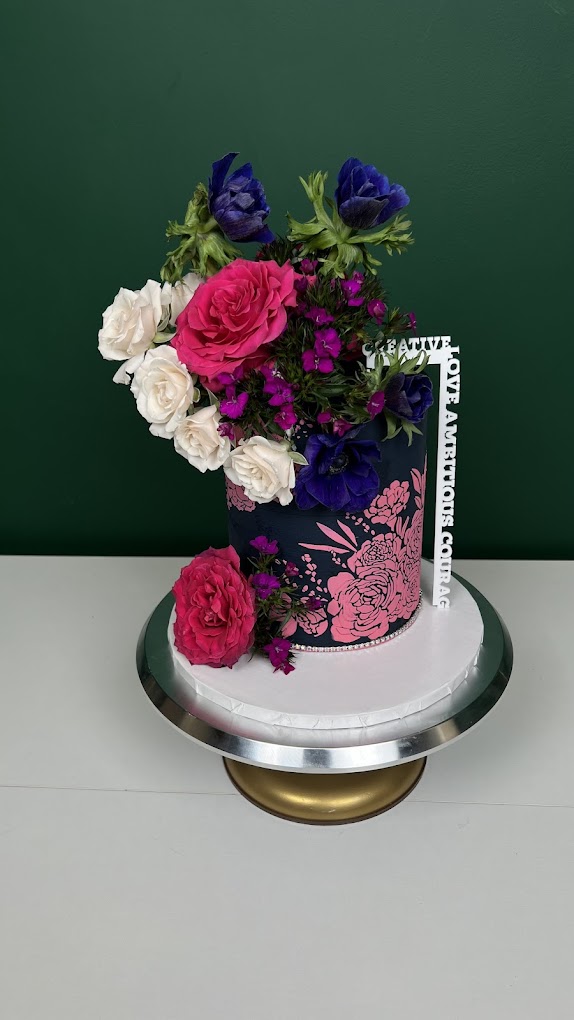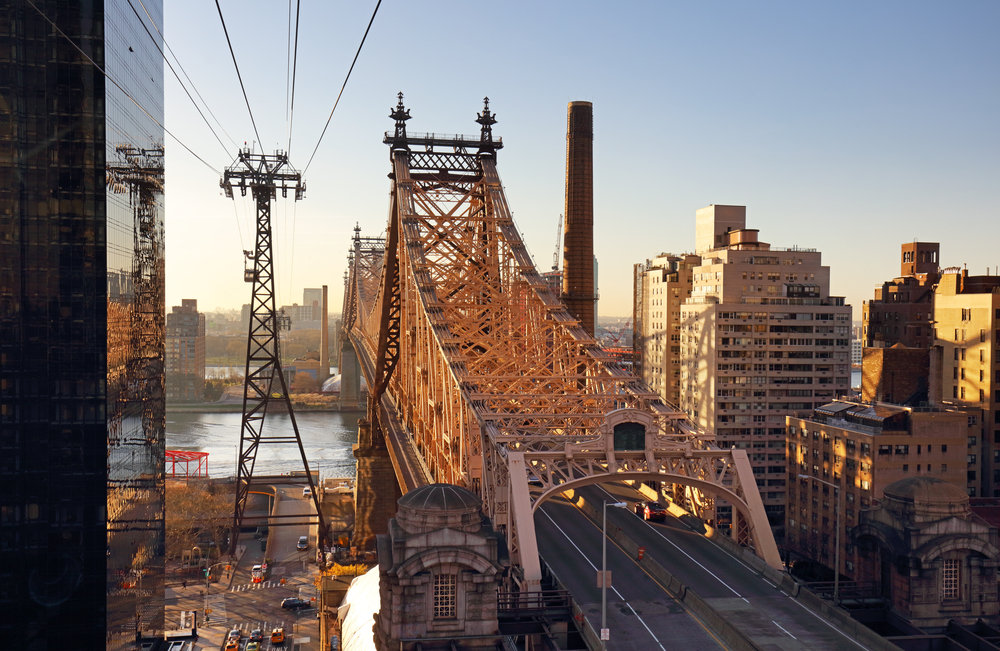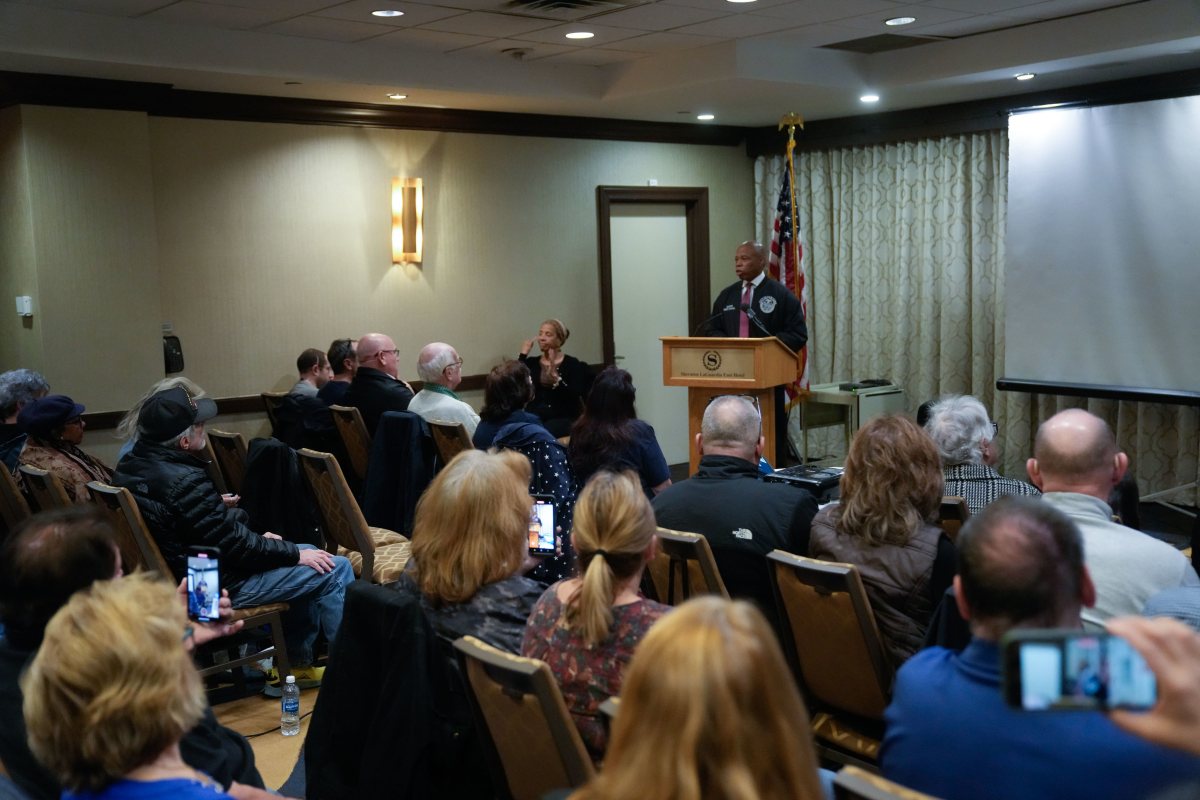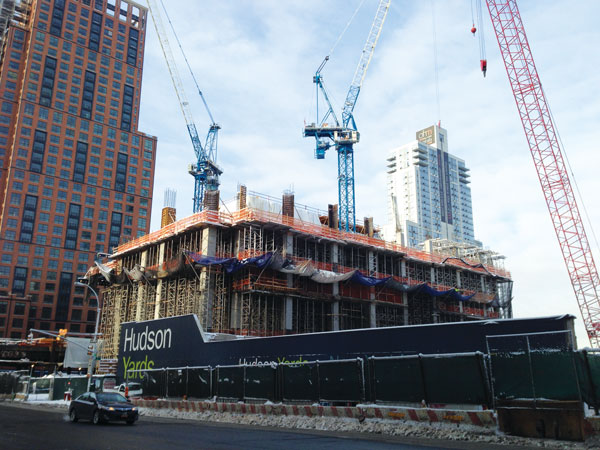
10 Hudson Yards, on track for completion by 2015, is the future home of Coach, L’Oreal USA and software giant SAP
BY SAM SPOKONY | Nearly four months after gleefully treating its workers — as well as numerous grateful reporters — to a five-foot-tall cake in celebration of the one-year anniversary of construction, Related Companies remains vocally optimistic about the current pace of work on its Hudson Yards development.
The 26-acre megaproject’s first building, 10 Hudson Yards — what will be a 52-story, 895-foot office tower at the corner of West 30th Street and 10th Avenue — is still moving on time and on budget, according to Michael Samuelian, a Related vice president who serves as one of the project managers directly overseeing Hudson Yards construction. (Related is jointly developing the project alongside Oxford Properties).
“I think we’ll see work on the tower go much more quickly now, since the beginning of construction is generally a slower process,” said Samuelian in a recent interview at the company’s headquarters in Columbus Circle.
He added that, at this rate, 10 Hudson Yards is still firmly planned to be completed by the end of 2015. Along with office tenants including Coach, L’Oreal USA and software giant SAP, the building’s base, along West 30th Street, will house a new Fairway Market grocery store.
But an equally important milestone is very soon to come — and it will spur the growth of the entire Eastern Rail Yard half of the development, which spans from West 30th to West 33rd Streets, between 10th and 11th Avenues.
Within weeks, construction will begin on the gargantuan 10-acre platform planned to cover that portion of the rail yard. And this step forward will allow the rest of that half of the project — including two residential towers, a six-story cultural center, six acres of public space, one million square feet of retail and an 80-story office tower (30 Hudson Yards) — to get underway.
“It’s huge to be starting the platform, because it gives our schedule so much more certainty that it had a year ago, and it means that the whole Eastern Rail Yard section will be operational within four years,” the Samuelian explained.
That half of the overall construction, especially the public space, will solidify the connection between Hudson Yards and the High Line, the final section of which snakes around the rail yard and is set to be finished by this fall. And Samuelian pointed out that the visitors to the elevated park’s final component will, for the next several years, have front row seats to watch the transformation of the site.
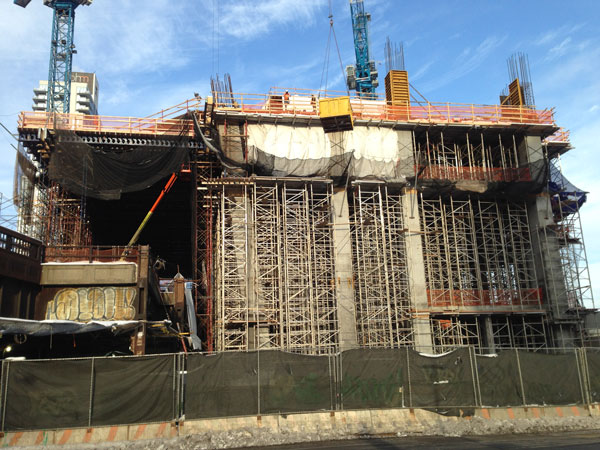
“You couldn’t have designed it any better,” he said. “It’s going to be the best construction viewing area that anyone’s ever imagined.”
Samuelian further noted that the six-story Culture Shed, which sits right alongside the High Line’s span on West 30th Street, is currently planned to be completed by spring 2018. He pointed out that, although Related is constructing the building, that institution will be run independently by the Culture Shed nonprofit organization, with its own arts and cultural programming.
Samuelian also expressed optimism about the recently announced news that Time Warner has signed on to become the anchor tenant of 30 Hudson Yards, which will be located at the corner of West 33rd Street and 10th Avenue. He stressed that Related would not have committed to starting work on that tower in the near future if a major tenant hadn’t been secured.
“Unlike some other projects Downtown, we don’t build without tenants, and we wouldn’t have started at 10 Hudson Yards until we had Coach signed up,” he said. “What would’ve happened if we didn’t announce Time Warner [for 30 Hudson Yards]? In terms of actually starting the work, it would’ve been a lot of ‘we hope, we hope.’ But now I can say, ‘we are, we are,’ and that’s a huge step.”
And in terms of looking for tenants, Related is now going through that process for two other office towers planned for the north side of West 33rd Street — technically not over the rail yard, but still considered by the developer to be an extension of the first half of the Hudson Yards project.
One of those planned buildings, 50 Hudson Yards will rise to 62 stories and will be wide enough to cover nearly half the block between 10th and 11th Avenue, according to current plans. But Samuelian specifically highlighted 55 Hudson Yards, a 51-story building which is planned for along 11th Avenue, noting its placement just steps away from the forthcoming entrance to the Number 7 subway extension (along with the bottom portion of the city-funded Hudson Park and Boulevard, another new green space which is set to open by the end of this year).
Referencing the building’s smaller size — at 710 feet tall, a good deal shorter than 10 Hudson Yards — Samuelian jokingly called 55 Hudson Yards “our boutique building,” and said Related will be focused on attracting a tenant base there that will be quite different than the massive companies moving into the two towers below West 33rd Street.
“It’s really going to be targeting law firms and financial firms,” he said. “In particular, the building is really suited to law firms because of its narrower floor plans, which fit with their more traditional approach to office space.”
Another of the developer’s noteworthy properties just outside the rail yard — although it doesn’t carry a Hudson Yards address — is 500 West 30th Street, which is set to be completed this spring, and will be Related’s first residential tower in the immediate area to open its doors.
The 33-story building, which sits across from 10 Hudson Yards, includes a total of 390 apartments. Although a Related spokesperson later couldn’t confirm how many of those units will be affordable, the building is, according to public documents, receiving a 421a tax break from the state, making it so-called “80/20 housing,” in which 20 percent of the units are affordable — in this case, 78 out of the 390 total units. After Chelsea Now went to print for the (February 26) issue in which this article first appeared, a Related spokesperson contacted us to note, “We can confirm the 78 units at 500 W. 33rd Street but can not confirm the number of units at Hudson Yards.”
Another relatively recent development affecting Related’s properties in the area was the approval of the Hudson Yards/Hell’s Kitchen Business Improvement District (BID), which was signed by former Mayor Michael Bloomberg on December 30, just before he left office. The BID, which spans from West 30th to West 42nd Street, between Ninth and 11th Avenues, will use its initial $1.2 million operating budget to maintain the city’s Hudson Park and Boulevard, as well as promoting local businesses and helping to keep the streets clean.
The budget will be funded primarily by new taxes on properties within the BID, and a sizable portion of that burden will certainly come out of the hands of Related, although a spokesperson for the developer declined to give any details. Members of the BID’s steering committee have said in the past that they were pleased with Related’s willingness over the past year to jump onboard with their plan — but Samuelian pointed out that the developer was, at first, somewhat tentative about supporting the BID.
“There were a lot of discussions about it, just because it seemed like kind of a double dip for us, since we’re already charged with operating and maintaining all of our own public space, and our neighbors aren’t contributing to that,” he said. “And the fact that we’re going to be burdened by contributing to the BID means that we’re now also going to be paying for parks to the north that anyone can use, so it seemed a little unfair to burden [our] Eastern Rail Yards with that.”
But, Samuelian explained, Related eventually took the high road and chose to back the plan — probably alleviating a great deal of concern among the BID’s founders.
“We’re full members now, and we’ll be cooperative because we we’re a part of the West Side, and we want this all to succeed,” he said. “We understand that we’re a big player in the neighborhood, so we have to help make it great.”
That role as a neighborhood partner — a role that includes not just linking to parks and the High Line, but finally bridging the community gap between Chelsea and Hell’s Kitchen — seems to remain at the forefront of Related’s collective consciousness, as it positions itself among the city’s other major developers.
During his response to a question about potential competition from rivals around the area, Samuelian paused, and then pointed out of the Columbus Circle office toward Extell’s famous — or, depending on who you ask, infamous — One57 building, which will eventually open as the city’s tallest luxury residential tower.
“We’re not making buildings like that, buildings that are pure vanity,” he said. “We’re making buildings that are beautiful, but they’re practical, and they add value to the community.”
As he and his colleagues have said in the past, Samuelian stressed that the diversity of Hudson Yards — particularly the vast public space, cultural institution and retail, in addition to the high end commercial and residential — is what sets the development apart.
“Anybody can build a great office building or a great residential building, and there’s a lot of great developers in New York,” he said. “But very few have the ability to do it all at once, to include these other amenities and find the right balance in what you’re providing. That’s what I think we’re doing here.”



